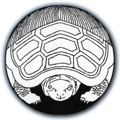First up, some words of gratitude:
Thanks to Brenda Weber and Doug Slaymaker and all the fine folks at the Kentucky Women’s Writers Festival last weekend. It was great to be part of your company …
Thanks to Harry W. Schwartz Bookstore in Milwaukee, and to the University Bookstore in Madison. I was happy to come back to Wisconsin with a finished book since I did a lot of the research for “All Over Creation” here. More on this below…
In Wichita, thanks to Sarah and Beth and all the very cool people of Watermark Books for such a very warm welcome. I’d been to every one of the United States except for Kansas, so this stop completes the country for me. And thanks to the kind woman who handed me the USA Today article about genetically engineered soybeans. I’ll return to this topic, too.
And finally, thanks to the Boulder Book Store in Boulder, Colorado, and the Tattered Cover Bookstore in Denver. It’s always wonderful to come back here, and it was especially fun this time because I finally got to meet Donna Gershten, author of the Bellwether Prize winning novel, “Kissing the Virgin’s Mouth.”
Now, back to spuds. During the tour, many people asked me what kind of research I did for "All Over Creation." I did quite a bit of research, but in the end, with a heavy heart, I decided to cut out the more arcane bits of potato trivia from the novel, for fear of sinking it under the sheer weight of my obsession. However, now I see that a weblog is the ideal place to recycle this material, and the more obsessive among you can read it if you'd like.
One of my main stops was Wisconsin. There is a thriving potato culture in the state of Wisconsin, and one of the hotspots is the USDA Potato Introduction Center in Sturgeon Bay, also known as NRSP-6. It is the point of entry for all potato germplasm into the nation’s potato breeding programs and thus into America’s food chain. I often slip up and call it the Potato Induction Center by mistake, because I have this stupid image in my mind of all the little potatoes lined up, saluting, and marching off to enlist.
However, the Introduction Center does not dabble with tubers. Their motto is “Genes, not Genotypes,” and they deal in seed. As a gene bank, their job is to reproduce and keep germplasm alive, to maintain sufficient quantity for distribution, and to keep stock lists of active seeds. When I was there, they were maintaining 4709 collections of potato germplasm.
In order to reproduce the seed, they must do extensive hand pollination, which is very cool. In nature, the bumblebee is the only pollinator of potatoes. It buzzes the flower, causing the anther to vibrate, which knocks off the pollen. Chico, the head gardener at the Center, made a little contraption from a door buzzer, which he uses to simulate the bee and to fool the potato flower into releasing its pollen. I imagine it's very sexy, if you're a male potato plant.
The mandate of station is to seek useful things, collected from the wild, and to disseminate these collections to users. Most users are professional plant breeders and researchers, affiliated with university, and occasionally corporate, breeding programs, but non-affiliated individuals and amateurs can receive germplasm, too.
The Sturgeon Bay station is a part of National Plant Germplasm System. In 1990, it joined Intergene, an international association of genebanks. The operating premise is one of basic co-operation. They share their techniques and the secrets of potato culture in order to create a global potato database.
The Potato Introduction Center, in keeping with NPGS policy, does not to keep patented materials or materials protected as intellectual property. The operating principle seems to be that germplasm is part of our "commons" and that anyone should be able to have free access to it. In a world of increasing privatization, I like this policy a lot.
